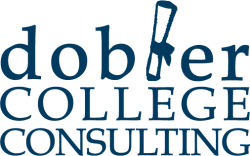The Common Application Essay Prompts
The Common Application went live a month ago and while some of you have already begun your essays, there are a lot of you who haven’t. If you are in the latter group and are stressed about where to start and what to write about, here’s a breakdown of the essay prompts and how you should approach them:
1. Evaluate a significant experience, achievement, risk you have taken, or ethical dilemma you have faced and its impact on you.
The key to this question is the word, “evaluate”. Don’t just tell a story, but get to the meaning of it and the impact it has had on you. You want to show self-awareness and an ability to reflect on your life; what do you think, how do you think it and why does it matter?
2. Discuss some issue of personal, local, national, or international concern and its importance to you.
This question asks you to wax poetic on why this issue is important to you – not why it should be important to me or anyone else. This is very relevant to your character and your ability to think critically, to take a stance on something and to show a college why you might make their campus a better place. Keep in mind that sometimes discussing a small or local issue can be more powerful than trying to discuss the national debt.
3. Indicate a person who has had a significant influence on you, and describe that influence.
Be willing to go beyond the introduction of someone and actually analyze why they are an influence on you, positively or negatively. Think about what “influence” means and consider that it doesn’t have to relate to a “role model.” At all costs, avoid the generic, “My mom is my hero” response unless there is a significant reason why – it’s just been done too many times.
4. Describe a character in fiction, a historical figure, or a creative work (as in art, music, science, etc.) that has had an influence on you, and explain that influence.
Keep your description to a minimum but really get into your analysis of the influence. The explanation is what reveals your passions, interests and personality. It’s this part of the essay that has the most value for the college admissions folks. Try to avoid the predictable cast of former presidents, movie stars and Harry Potter.
5. A range of academic interests, personal perspectives, and life experiences adds much to the educational mix. Given your personal background, describe an experience that illustrates what you would bring to the diversity in a college community, or an encounter that demonstrated the importance of diversity to you.
What will you contribute to your future campus community – that’s the message you are trying to convey here by talking about the things you have already done. Quality versus quantity, just like with your activity list and resume. When getting into diversity, be mindful that diversity is not just about race. Additionally, if you are going to write about a racial topic, be mindful of the fact that you do not know who your reader(s) will be. Be wary of which direction you take this question if you are applying to schools where the mindset and atmosphere is more conservative. This is a topic you can take some risks with, but not with these schools.
6. Topic of your choice.
This question is for the very few of you who just don’t have something to write about that fulfills the previous five questions. However, just about anything can fit into one of them so try to exhaust those possibilities first. Because while it is tempting to go with this question due to the perceived freedom it allows you, it’s also a risky proposition for the same reason. You have to make sure you are making a point of significance, that you are getting your voice across and giving the reader a sense of your character, values and beliefs. In short, you have to make sure your essay matters.
Right now we’re doing a lot of work with essays, so if you would like some help with yours give me a ring or email me directly at eric@doblercollegeconsulting.com – I would love to hear from you!

 The other day I visited
The other day I visited 